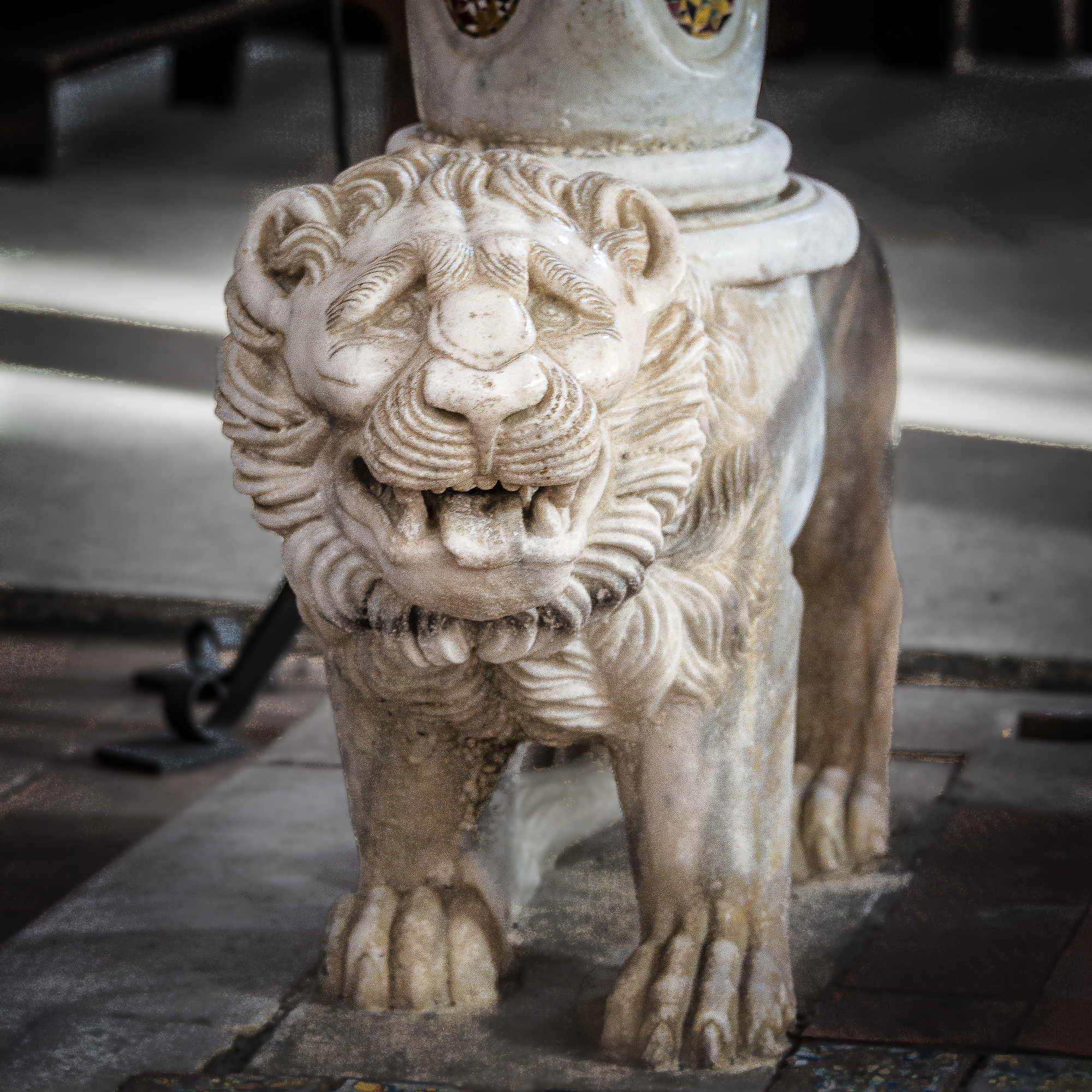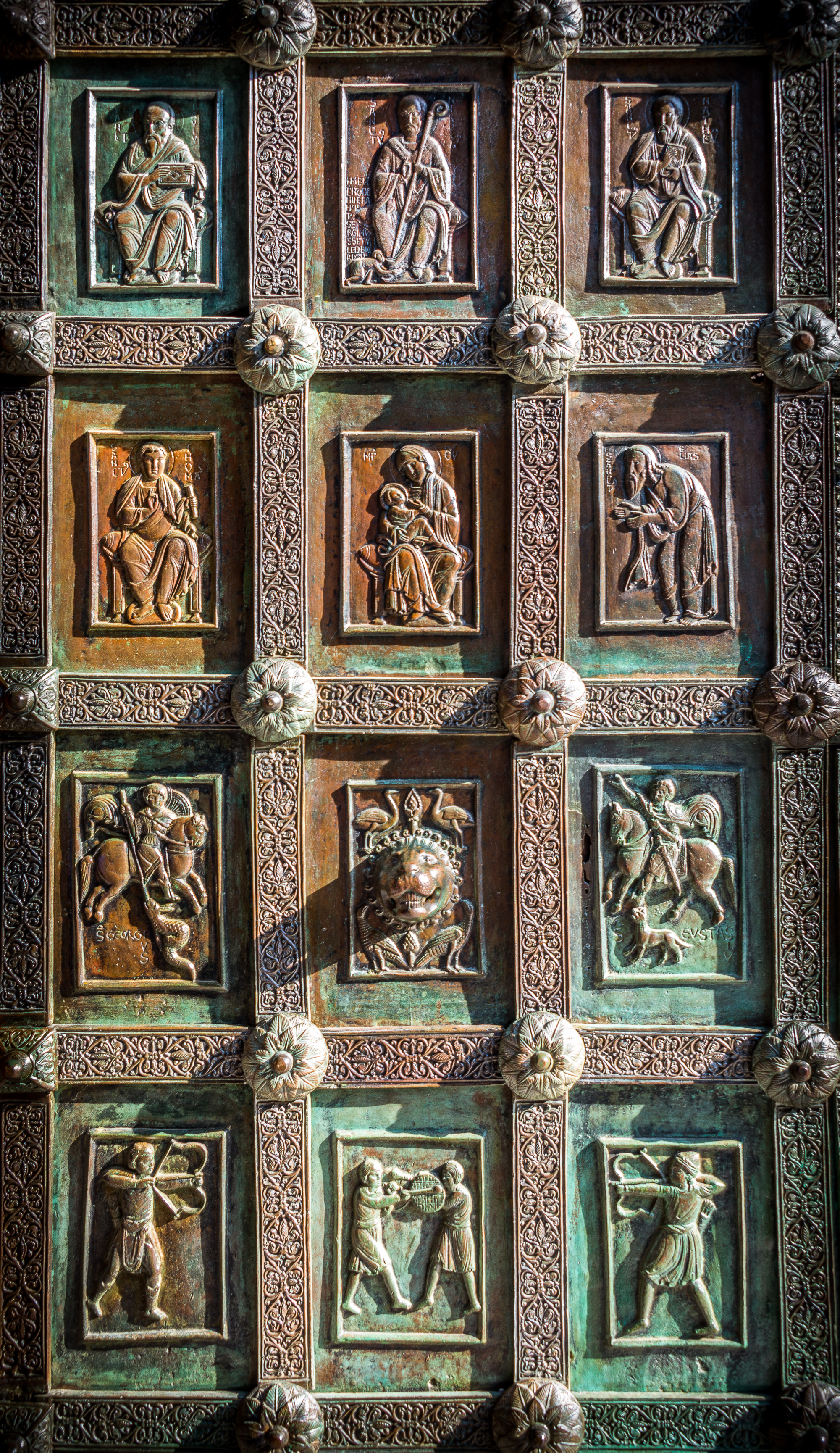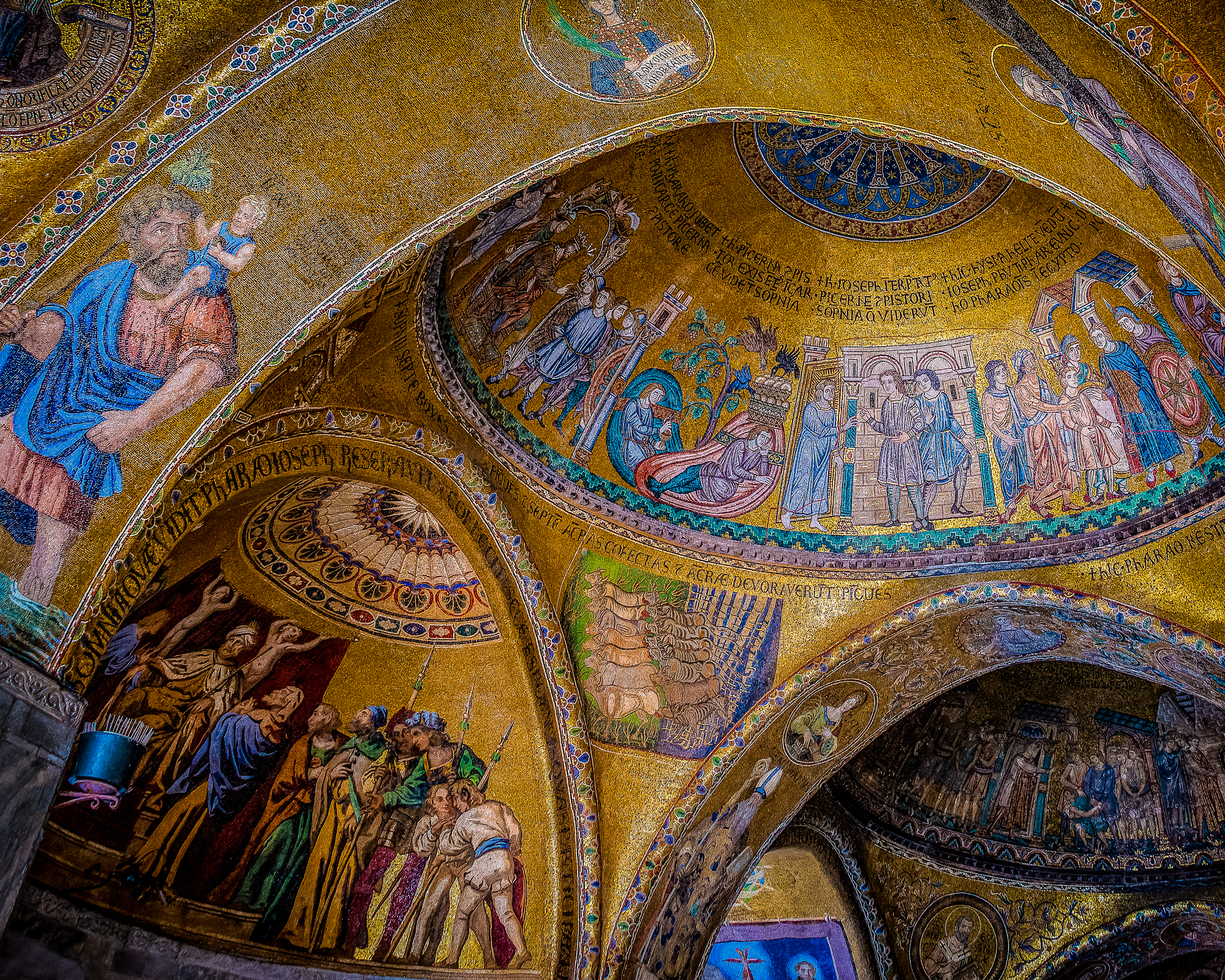A quiet place of peace and marvelous views.
“The first mention of Villa Cimbrone is found in the 11th century. The origin of the name comes from the rocky outcrop that surrounds the 20-acre site”
It's time to return to the Amalfi Coast...way above the Amalfi Coast.
Getting There
Villa Cimbrone (cheem-bro-neigh) sits in the town of Ravello, at the end of its peninsula-in-the-sky. And Ravello sits high on the escarpment above the town of Amalfi. Getting there is not too difficult, unless you are faint of heart on narrow, winding, ever-climbing, roads.
A pokey Piaggio on the serpentine road
The road from the Amalfi Coast highway to Ravello gets very narrow...so narrow that a traffic light allows cars going up hill to proceed whilst cars traveling down hill wait, and versa vice. And not all of the vehicles travel up the road at the same pace, as you can imagine from this photo.
[lease click on a photo to get a larger view]
Here you see this peninsula-in-the-sky, which is the town of Ravello. Notice the cliff to the left where The Belvedere is located.
A birds-eye view of the Ravello escarpment
The Piazza and Duomo
One parks, or is dropped off by taxi, at the Piazza, where the duomo, or cathedral church, sits.
The Duomo of Ravello
I'm not sure if this is admonishment, praise, or otherwise, but the priest of the Duomo has something to say to his parishioner and her sun-glass-wearing son.
Inside the church you will find the typical, gorgeous trappings of Italian churches. Here we see the Angel Gabriel doing battle with Satan, Mary and the soon-to-be-risen Christ, a marble-lion column support, a bronze door with Biblical scenes (well, mostly Biblical, as you can see St George slaying the dragon in one panel), a marble and mosaic altar with Jonah waving farewell as he is devoured by the serpent, and a painted icon.
Young entertainers on the Piazza at Ravello
While we were there, a number of the young of Ravello were having fun making music as they marched around town. I'm not sure if the fingers-in-her-ear girl in the rear is enjoying the group's musical attempts.
Frivolity in Ravello
These two young men seemed to be particularly zealous in their appointed task.
Our first thoughts as we watched these children was, 'This would be a fabulous place to live.'
A Walk to the Villa
It is a walk of about 4/10ths-of-a-mile from the piazza to Villa Cimbrone, all the while wandering narrow, pedestrian-only walkways. And along the way, you will have ample opportunity to purchase beautiful, hand-painted Italian ceramics. And we love the care that is taken in wrapping purchases. In the photo on the right, notice the ceramic panel in the top-right -- you will see what that scene is in a moment.
Along the way we saw several shrines and vines, and a cat or two.
We came across an occassional lazy dog sleeping under lemon trees, poppies, and views of other towns across the valley.
This fabulous view took our breath away...town after town clinging to the hillside above Amalfi, marred only with the drifting smoke from someone burning their trash. If one isn't born in a particular town, how on Earth could you decide in which to settle?
Looking to the west from Ravello, where the town of Amalfi sits at the terminus of the distant valley
The Villa
At last, we arrive at Villa Cibrone. The first mention of Villa Cimbrone is found in the 11th century. The origin of the name comes from the rocky outcrop that surrounds the 20-acre site, which can be seen in the aerial photo at the top of this article, which was known as 'Cimbronium'. You can read much more about the history of this property on the Hotel Villa Cimbrone website here.
Today, the estate consists of the villa/hotel, a Michelin-starred restaurant (that being the subject of next week's article), the gardens, and the famous scenic viewpoint known as 'The Belvedere.'
Here is your first view of the vine-covered villa as you approach.
The vine-covered Villa Cimbrone
You see scenes from inside the walls of the villa, just below.
I particularly like this scene of the stairway, and the intricate pattern of iron work found on the door on the landing.
Verdant Gardens
And then there are the gardens.
The Belvedere
The world-famous Belvedere, perched atop a cliff, offers a magnificent view of the Mediterranean, one which these time-worn busts seem want to ignore.
The busts of The Belvedere
These statues are actually quite whimsical, as their expressions are not what one normally sees in classic carving. See what I mean by clicking on the thumbnails in these closeup views.
They look very content to be sitting there, don't they?
In this view from The Belvedere, you can see more towns to explore along the Amalfi Coast, should one have the time.
View of the Amalfi Coast looking to the east
I'll leave you with a quote from Gore Vidal concerning The Belvedere: 'A wonderful place from which to observe the end of the world." And when it comes to that, I would have to agree.
Ciao for now,
Steve
Steve and his lovely wife, Ellen
Next week: The Michelin-starred restaurant at Villa Cimbrone






































